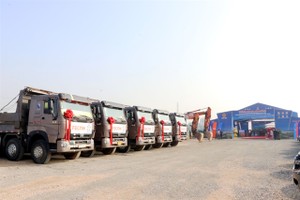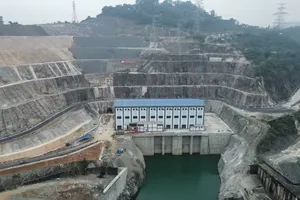
According to the Document, the Ministry of Industry and Trade (MoIT) was assigned to examine and upgrade data on current win power projects in Vietnam to prepare for the addition of wind power into the national electricity grid. These projects need to be transparent, scientifically developed, synchronous with the existing grid, and economically efficient.
Estimations from MoIT reveal that in 2025, the request for wind power will reach 11,630MW, accounting for 20 percent of the national electricity demand.
In the North Central region, there will be 51 wind power projects in the provinces of Ha Tinh, Quang Binh, and Quang Tri to harness a total capacity of 2,919MW. In the South Central Coast, the provinces of Binh Dinh, Phu Yen, Ninh Thuan, Binh Thuan have proposed to launch 10 new projects to gained a capacity of 4,193MW. Similarly, in the Central Highlands, the provinces of Dak Lak, Gia Lai, Dak Nong, and Lam Dong have asked to run 91 projects to produce a capacity of 11,733MW.
In the Southwest region, 94 new projects are proposed in the provinces of Tien Giang, Ben Tre, Tra Vinh, Hau Giang, Soc Trang, Bac Lieu, and Ca Mau to harness a total capacity of 25,541MW. However, the Southeast region normally has a high electricity demand, yet only Ba Ria- Vung Tau has asked for permission to launch two new projects with the capacity of 602MW.
The main disadvantage of wind power production in Vietnam is that most projects are sited in rural areas, with a low electrical load. Despite much investment in facilities upgrading lately, they seem not to satisfy the requirements in order to be successfully connected to the 100kV or 200kV grid.
Chairman of Binh Thuan Province Wind Power Association Bui Van Thinh shared that since the electricity grid in his province cannot meet the necessary conditions, at the moment, Phu Lac Wind Power Station still loses 20 percent of its capacity each quarter on average.
There is obviously much trouble in wind power transfer in the potential provinces of Ninh Thuan, Binh Thuan, and Khanh Hoa because most electricity gridlines observe Electricity Planning No.VII and local 110kV planning, both of which have not considered the addition of wind power yet.
In reality, current wind power projects in Vietnam mostly focus on local needs, not the synchronous comprehensive ones, and thus unable to be exploited to the fullest.
What is more, in Vietnam, both solar and wind power stations are located in naturally advantageous sites, yet with low demand. Meanwhile, regions with a higher electricity demand are not suitable for building such constructions. This has led to a local electricity overload, as well as a value loss and inefficient exploitation.
It is high time that a detailed plan focusing on synchronous development of electricity sources and gridlines was proposed in certain potential provinces. Otherwise, investment into this new power source will become a money and labor waste due to capacity loss.
























